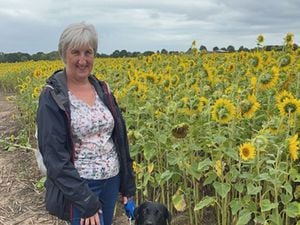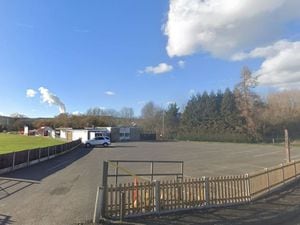Inside Shrewsbury's green machine on Battlefield - with video
From mattresses to take-away cartons, food waste to contaminated packaging - about 90,000 tonnes of non-recyclable waste is delivered to Shrewsbury's energy recovery facility every year.
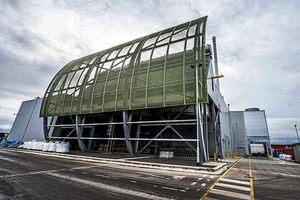
Once your rubbish is collected at the kerbside, it is hard to imagine the journey it goes on with the end result creating electricity for about 10,000 homes a year.
But the huge structure at Battlefield is where the magic happens – under remarkably tightly controlled conditions and with almost no disruption to the local area.
A constant stream of trucks bring the waste from homes across the county and is put in large bins.
Once the dumper trucks are weighed upon arrival, they empty their load into a giant waste storage bunker. Larger items are shredded before cranes move up to 12 tonnes of rubbish every hour into the feed chute.
The waste is then burned at temperatures of at least 850 degrees centigrade – gases produced here and cleaned before being released into the atmosphere through the giant chimney.
Above the furnace sits a giant boiler where superheated steam is produced. This is used to drive the huge turbine which generates the electricity that can power thousands of homes each year.
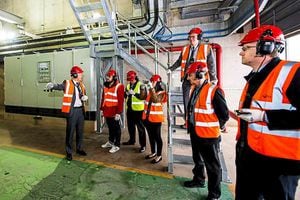
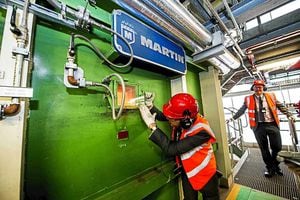
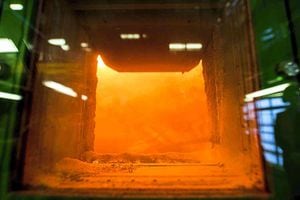
And to emphasise the desire for minimal waste? Any ash created during the process which is not contaminated is used as aggregate – mainly in work on our roads.
Steve Mitchell, West Midlands regional director for Veolia – who runs the facility – said they wanted local people to understand what went on in the giant building on a 24 hours a day, seven day a week basis.
"We want to extract as much energy as possible," he said. "Water is turned into steam in the process and that steam powers the turbine and that is where we generate electricity.
"We treat the gases chemically and that neutralises them so we are able to distribute them to atmosphere.
"Anything we put in the kitchen bin from leftover food waste or contaminated packaging to takeaway cartons is brought here. The reality is we could recycle lots more than we do by washing containers. We want to make what we do understandable. It is technical and complex but in terms of engaging with the public and ensuring they have confidence in us we want to make it as simple as possible.
"Basically we are taking products previously dumped in a hole in the ground and generating energy so we are showing there is a value in residual waste."
The energy recovery facility at Battlefield processes around 90,000 tons of household waste from across Shropshire every year. This is anything that has not been put into recycling boxes for kerbside collection.
The plant employs 24 staff who work on shift patterns to ensure everything is running smoothly and gases being emitted from the chimney meet strict environmental guidelines.
From the storage bunker the waste is lifted into a feed chute by overhead cranes at a rate of up to 12 tons per hour. Larger items are put through a shredder.
The furnace burns the rubbish at a minimum temperature of 850 degrees centigrade. This can reach temperatures as high as 1,000 degrees. Steam from this process is used to power the turbines which generates the electricity.
The amount of electricity produced from the plant could power about 10,000 homes every year.[/breakout]
But getting permission to build the facility was not straightforward. Locals had concerns about visual impacts, pollution and traffic worries.
To combat some of these, screens have been incorporated into the design to shield it from view as best as possible and a green area has been planted on the roof of the storage bunker and delivery chutes.
A community liaison group was set up to ease the fears of locals, something Mr Mitchell said was very important.
"Through the community liaison group that meets every quarter we would answer questions and give facts and figures," he said.
"There is a confidence issue when new facilities like this come along so we wanted to show we were doing things correctly. In the two years it has been here it is doing what we said it would be doing and confidence is growing and people are seeing it is not something where black smoke is coming out the chimney."
Councillor Mal Price, portfolio holder for planning, housing, regulatory services and environment at Shropshire Council, objected to the plans for the site when they were first put forward.
But having seen the plans go through the process, he now agrees it is a huge benefit to Shropshire as a whole.
He said: "It is really about seeing how professionally and efficiently it works. I have come from a unique position.
"I was one of the objectors originally and saw it refused by the planning committee by 10 votes to none before it went through the planning appeal process with a full public inquiry where everything was challenged to the nth degree and then the inspector gave approval."
He said the council was working with Veolia to simplify the process of recycling at home and said the recent introduction of cardboard collections was one step towards that goal.


